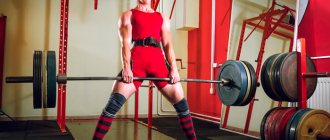September 10, 2021 Admin Home page » Tips and tricks
Find out whether you need to take a break from training or whether you should train endlessly. Important tips and recommendations about physical activity to create a beautiful figure and good health.
Many have wondered whether it is necessary to take a break from training and how often? After all, there are days when you don’t feel like training, but you go to the gym, the body gets a load, but you don’t get much pleasure, everything is based on moral and volitional qualities, even if it doesn’t happen often, but everyone has had such a condition, you will agree.
Let's look at the main questions below and give answers to the thoughts that torment the mind about what and how to do correctly:
Do you need to take a break sometimes?
Don’t even think about this question – it’s necessary. Any activity after prolonged work requires rest. Over time, desire decreases, motivation drops, training is not carried out at full strength, exercise technique is lost, and in the end the famous state of “being unable to do something” sets in.
Also, do not forget that training puts stress not only on muscles, but on ligaments, tendons, joints, cartilage; fatigue of the musculoskeletal system increases from month to month, so it requires recovery.
Even fitness and bodybuilding stars take a break from training, which means that ordinary amateurs definitely need this. Imagine that the car will constantly drive under load without rest, the engine will fail faster, this is the same with our body, overtraining will eventually finish it off and the results will begin to fall.
What is a day of rest
Rest after training means a break from the main physical activity.
For example, if you are engaged in bodybuilding, then this is a lack of exercise in the gym for a certain period of time.
Rest can be active or passive .
In strength sports such as powerlifting, bodybuilding or CrossFit, the passive form is more common among amateurs. That is, a complete lack of physical activity.
But scientists have long proven that when spending time passively, the body’s recovery takes longer.
This means that the mass and strength that all bodybuilders strive for will grow more slowly!
This fact has long been known among professionals. That's why they try to organize active recreation between classes.
Active rest means performing light and short physical activity not related to main training.
For example, with a strength-oriented training, on the day of the break from exercise, do exercises, light cardio, and even better, stretching for 15-20 minutes.
The essence of active rest is to accelerate blood circulation without severe fatigue of the body.
More powerful blood flow on a day off delivers more nutrients to the muscles and ligaments.
This means accelerated growth of muscle tissue and restoration of the musculoskeletal system.
How often to take a break and when?
Here you should focus on personal feelings and body conditions. If you have a series of injuries - sprains, joint pain, general fatigue of the body that lasts for quite a long time, or the working weights drop and the results do not want to improve. At the same time, the whole body hurts from aching pain and this is not always muscle pain.
Even if you are full of strength and energy is in full swing, give your body a holiday 2 times a year, and instead of working in the gym, actively include swimming, cycling or stretching on your rest days, don’t worry, you won’t weaken, but your body will get rest and when you return to training, it will reward you with new sports results.
Examples[edit | edit code]
Typically, I suggest selecting recovery day types as follows:
Active recreation[edit | edit code]
It is used for training that primarily loads the central nervous system (heavy weights, explosive exercises with relatively small training volumes), when muscles and metabolic systems do not require much rest time, and only the central nervous system is restored. A light workout that doesn't push your nervous system back into overdrive will speed up recovery and won't overload your metabolic systems. Do not use active recovery at higher training volumes, when muscle and metabolic processes are more difficult to recover.
Passive rest[edit | edit code]
Can be used for any workout.
Recovery with the use of auxiliary aids[edit | edit code]
It may be tempting to use various means constantly to become a “recovery machine,” but it’s best not to do so. Remember that the body adapts to both training stress and recovery procedures, and if you use these remedies over and over again, they will lose their effectiveness. It's best to save them for special occasions where the muscles are subjected to significant overload (high volume at relatively high intensity).
How long should the break last?
This depends on the general exhaustion of the body, each body has a unique system, some recover faster, some slower, but in any case, the break in training should be at least 7 days and no more than 30.
If there are no injuries, then the break should not be long; with injuries, the duration increases, since if you start training without recovering from an injury, you can fly out of sports life for a longer period.
In any case, you must understand that the longer the break lasts, the harder it will be to get into a sports rhythm; the muscles will need more time to regain their former strength and endurance.
How to recover faster after training?
1. Avoid overtraining
.
Proper training planning is the easiest way to quick recovery. Excessive stress and lack of rest reduce the effectiveness
of physical exercise and
delay the desired result
.
2. Cool down
.
Cooling down, or “cooling down”, is slowing down the pace of your workout, but not stopping it completely. Continue moving at low intensity for five to ten minutes. This will help remove lactic acid from the muscles and relieve tension. Remember that warming up and cooling down is an absolutely necessary part of training in cold temperatures. It is especially important if several periods of physical activity are expected per day. After an intense workout, do some stretching
.
This is a quick and easy way to help your muscles recover. 3. Replenish fluid loss
.
During physical activity, a person loses a lot of fluid. Ideally, these reserves should be replenished during training. If this is not possible, be sure to drink afterwards. Ordinary clean water maintains normal metabolism in the body and accelerates its recovery. 4. Eat
.
Great “news” for those who are losing weight - exercise depletes energy reserves. However, if these reserves are not replenished enough, the body will begin to save energy, and there may not be enough strength for the next workout. The best option is a meal of high-quality protein and complex carbohydrates an hour and a half after training. 5. Get a massage
.
Light relaxing massage movements improve blood circulation, and therefore the transport of nutrients throughout the body. This helps the muscles recover and refuel much faster. Learn how to massage yourself - this will save a lot of money. 6. Take a contrast shower
. The walls of blood vessels contract when exposed to cold and expand when exposed to heat, improving blood circulation throughout the body. A contrast shower not only relieves pain in the muscles, but also improves the elasticity of the vascular walls.
The main mistakes in the gym
Neglecting rest is by no means the only mistake newbies make in the gym. Find out how to avoid eight more of the most common ones.
7.
Get enough sleep
.
The human body has an amazing ability to take care of itself if left undisturbed. For example, during sleep, the body produces growth hormone, which is largely responsible for tissue repair and growth. After your workout go to bed early
, allow yourself to stretch and luxuriate in bed before bed, and read a good book at night. The main thing is not to stay up late watching TV.
Is it necessary to stop training completely?
This is everyone’s choice, some are more, some are less obsessed with sports, some experience withdrawal from lack of physical activity, while others simply enjoy idleness and relaxation.
However, you should know one thing, those who during rest prefer light training with their own body weight - squats, pull-ups, parallel bars, abdominal exercises and aerobics, after rest will get in shape almost immediately, while those who are completely rested will have to spend a little time to regain your previous physical state.
The choice is yours, do what is convenient for you and focus on how your body feels.
How long does it take to recover?
How much time to spend on rest depends on many factors - for example, on the level of training: for beginners, it makes sense to give the body two days to recover. The intensity of the training also plays a role: “You can do walking every day, but for the more energy-intensive CrossFit you need a long break. It’s also important to remember that the older we get, the more time we need to recover.” You should focus on your pulse: if it is elevated, this may be a signal that it is time to take a break.
View on Instagram
How long does it take for muscles to recover after training?
The jogging regime should be strictly cyclical. If the goal is to achieve beautiful forms, the loads gradually increase at certain intervals. For a certain category of people, running is not the only way, but it is a sure way to improve their health, for example, for the elderly or those suffering from the early stages of hypertension.
For them, the goal is not to enhance training with additional loads, but adherence to the regime is a prerequisite. Long intense runs should be followed by a period of rest and recovery of muscles and other human life support systems. Short rest or lack thereof leads to muscle and nervous strain, which contributes to harm to the body.
There is no exact figure for how long muscles recover after training. However, numerous sports studies, based on biological and chemical scientific knowledge about the ongoing processes inside a person, distinguish several stages.
Phase No. 1 - rapid recovery
High-quality running training is a situation of enormous stress for the body, accompanied by the release of the hormones adrenaline, cortisol, etc. When running, significant energy reserves are consumed, the cardiovascular and respiratory systems work in accelerated mode.
The first 20-30 minutes after completion of training, a rapid recovery phase occurs in the muscles. It is recommended to gradually finish running, not to stop abruptly, but to switch to a calmer rhythm or even a step for 5-7 minutes. During this time, your pulse and breathing will return to normal.
To return to a normal state at the stage of rapid recovery, the body needs to replenish depleted reserves of healthy carbohydrates (glucose), amino acids, and minerals; restore hormonal and water balance.
Restoring water balance is quite easy and in a short time. You need to quench your thirst immediately after training, or drink at intervals during it. You need to drink special isotonic drinks or still mineral water.
The return to normal energy and hormonal balance is carried out by replenishing the reserves of creatine phosphate, glycogen, ATP, and the entry of anabolic steroids (steroids, insulin) into the blood.
Phase No. 2 – slow recovery
When the initial level of minerals and nutrients is balanced, the process of protein, amino acid and enzyme synthesis begins - the body begins to work to restore damaged muscle tissue. Running, like any strength training, is about stretching and tearing muscle fibers that the body seeks to heal.
The repair of damaged cells determines the rapid absorption of nutrients from the digestive system, so it is recommended to help the process from the outside: take 25-30 g of purified protein or other sports nutrition aimed at restoring strength.
This process begins 4 hours after running, takes from 15 to 24 hours and is called the compensation phase, that is, the restoration of muscles to their original level.
Phase No. 3 – supercompensation
The most important phase of muscle recovery, when maximum growth occurs. Begins 36-72 hours after strength exercise and lasts up to 5 days.
The human body undergoes processes similar to the second phase, but performance and muscle growth increase by more than 10%. The body continues to increase its consumption of carbohydrates and amino acids in order to store energy for subsequent exercise.
Excessive growth of muscle fibers is ensured by the ongoing process of replacing destroyed protein. Muscles grow when the rate of protein synthesis exceeds the rate of protein breakdown.
At this stage, the next planned jog or other strength load on the muscles must be carried out.
Phase No. 4 – delayed recovery
The fourth phase appears if training was missed during the supercompensation period and the muscles did not receive a commensurate load. Delayed recovery is characterized by the return of the muscular system to the state it was in before running.
One or two missed runs will not have time to return the body to a calmer mode and weaken the muscles, but progress in building them and endurance will be significantly slowed down. Therefore, it is important to stick to a clear schedule for your studies.
Reasons for taking a break from training
Are you tired
Frequent and intense training without properly organized rest periods can lead to overtraining. This condition indicates that the body does not have time to recover, and it urgently needs a break. If you ignore your body's signals, you can get sick and lose all desire to exercise for a long time.
To avoid pushing yourself to such an extreme state, you need to think through your training plan and include periods of reduced intensity and rest.
You've hit a plateau
After a long period of training, progress may stop due to the body’s adaptation: the previous load is no longer effective, and the body does not yet have the resources for further development.
During such periods, rest, on the one hand, “weakens” the body, and on the other, gives it the opportunity to accumulate energy for growth. When returning to training, this allows progress to move forward.
You have completed the training program
In our School's programs, the load is distributed so as to consistently and safely bring a person to peak form. Then everyone acts in their own way.
To maintain your gains without overtraining or plateauing, you need to rest properly between training programs.
Regardless of the reason for the break, a smooth exit from the training program will maintain or even improve your results.
During rest from training - provided that you completed the cycle smoothly - the muscles decrease in volume, but do not lose their relief. The skin remains tightened and swelling, which often appears during a very intense training regimen, goes away.
How to eat while resting from training
Nutrition will help you maintain results during the rest period from intense training. Let's look at the basic principles.
1. Set a goal
A decrease in the number of workouts or lack thereof is not a reason to let everything take its course. Formulate nutrition goals for this period. For example: minimize fast food and sweets or diversify proteins in the diet, etc.
2. Make a plan
Think about how you will achieve your goals. A calendar, checklist, or your own way to track stages will help you.
3. Work with the composition of the portion
Since you are not exercising or have reduced the intensity of your workouts, your body needs less energy. Therefore, it is necessary to reduce the amount of food.
Pay attention to the caloric content and composition of the diet:
- Monitor the quality of food. The basis of the menu should still be natural products: cereals, seasonal vegetables, legumes, dairy and meat products.
- Add vegetables - they should make up at least a third of the diet. Replace hearty snacks (sandwiches, cheese, chickpea crunches) with vegetable ones.
- Reduce portion sizes.
- Redistribute calories: make breakfast more filling and dinner lighter.
| There is no need to reduce your caloric intake to a basic level; do not put your body under stress. With the cessation of active training, you will feel that now you really need less food. |
4. Create a challenge
Create short-term nutrition challenges. For example, a week without sugar or gluten, a vegetarian week, etc. This will help you stay focused on your diet.
5. Plan for fun
Allow yourself to relax and enjoy culinary pleasure. Go to your favorite coffee shop or invite your friends to cook a delicious dinner together.
| Rest is simply a change of activity. During this period, your task is not to relax as much as possible, but to give your body the resources to recover. The focus of working on yourself during this period changes, but is not lost. |











